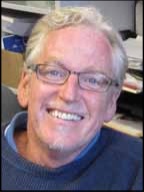Awardee Interviews | Biography: Charles Campbell
Charles Campbell

Prof. Charles T. Campbell, University of Washington, “for seminal contributions to determining accurate adsorption energetics and for developing key concepts for the analysis of important catalytic reactions.”
Charles T. Campbell is the Rabinovitch Endowed Chair in Chemistry at the University of Washington, where he is also Adjunct Professor of Chemical Engineering and of Physics. He has coauthored of over 300 publications and two patents on surface chemistry, catalysis, physical chemistry and biosensing, with over 17,000 citations and an h-index of 68. He is an elected Fellow of both the ACS and the AAAS, and an elected Member of the Washington State Academy of Sciences. He received the Arthur W. Adamson Award of the ACS and the ACS Award for Colloid or Surface Chemistry, the Gerhard Ertl Lecture Award, the Robert Burwell Award/Lectureship of the North American Catalysis Society, the Ipatieff Lectureship at Northwestern University and an Alexander von Humboldt Research Award. He served as Editor-in-Chief of Surface Science for ten years. He now serves as Editor-in-Chief of Surface Science Reports, and on editorial boards for the Journal of Physical Chemistry, Catalysis Reviews, Catalysis Letters and Topics in Catalysis.
Campbell received his BS in Chemical Engineering at the University of Texas in 1975 and his PhD in Chemistry there in 1979 under the guidance of Prof. J. Michael White. He then did postdoctoral research in Munich, Germany with Prof. Gerhard Ertl (winner of the 2007 Nobel Prize in Chemistry), supported by postdoctoral fellowships from the National Science Foundation and the Alexander von Humboldt Foundation. Before the University of Washington, he worked at Los Alamos National Labs (1981– 1985) and Indiana University (1986–1989). He has served as the main research advisor for over 35 postdocs, 30 PhD students, and 50 undergraduate students.
Campbell is perhaps best known for his use of surface analytical methods to clarify catalytic reaction mechanisms on solid surfaces, and structure–function relationships in catalytic materials. He also helped develop several methods for characterizing surface reactions. He developed the world’s most sensitive adsorption microcalorimeters for studying well-defined surfaces, and applied them to measure the energetics of elementary surface reactions of importance in catalysis and metal adsorption and adhesion to oxide supports. By combining careful surface structural control of model catalysts, detailed surface characterization and challenging catalytic rate measurements, often at high pressures on single crystals, he helped to uncovered many mechanistic details of industriallyimportant catalytic reactions, including CO oxidation, ethylene epoxidation, water-gas shift, methanol synthesis, and various hydrocarbon conversion reactions. His experimental studies of catalyst poisons and promoters, bimetallic surfaces and metal nanoparticles on oxide surfaces included many first-time observations of phenomena that soon became well-known as fundamental effects in surface chemistry.
He introduced the ‘degree of rate control’, a widely-used mathematical method for analyzing microkinetic models to determine which adsorbates’ and transition states’ energies most critically control catalytic activity and selectivity. It is the basis for his fast new method for computational screening of catalytic materials.
His methods for quantitative analysis of adsorption kinetics using surface plasmon resonance are widely used. He applied them to the first measurements of sticking probabilities under liquid solutions and high-throughput methods for studying biomolecule binding in micro-array format.